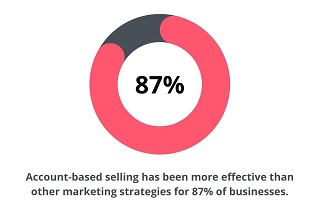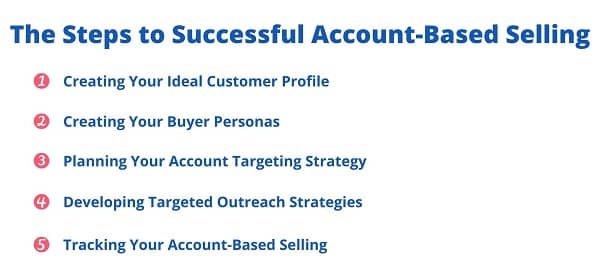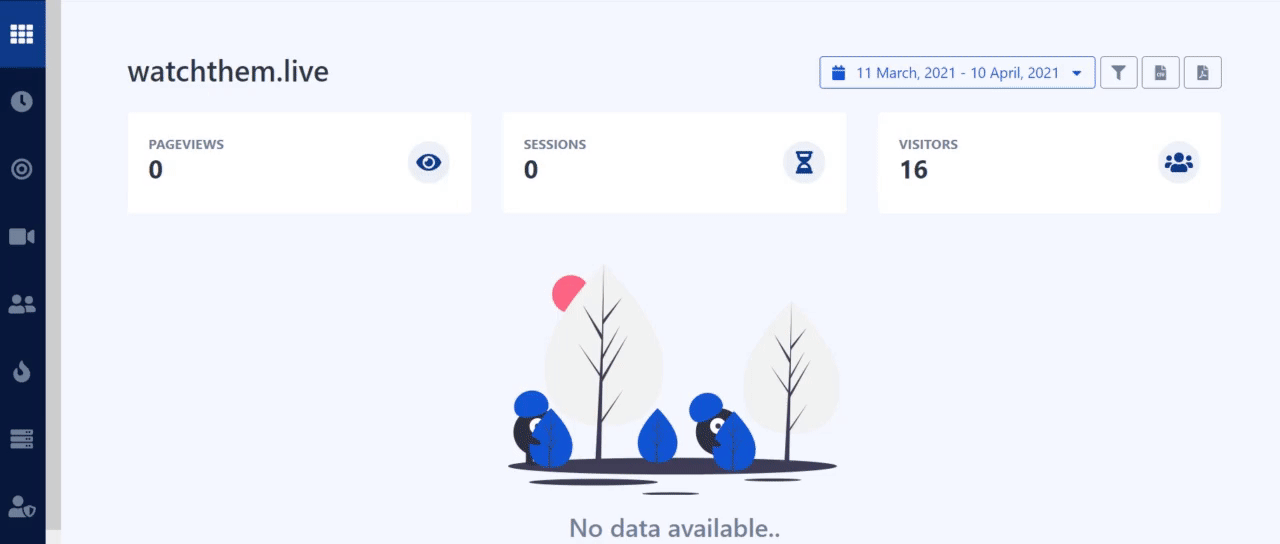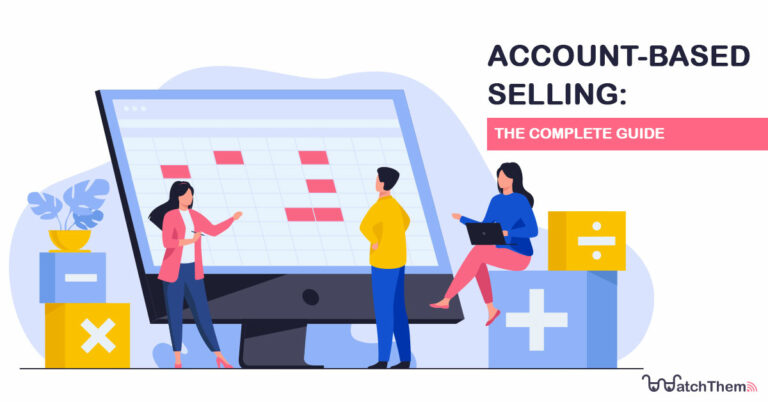Page Contents
More and more businesses are turning to account-based selling thanks to the data-driven insights provided by the new technologies. Having access to these insights allows companies to find key target accounts and personalize their marketing for them. Therefore, account-based marketing can fuel revenue growth; as a matter of fact, it has increased the win rates of 86% of businesses.
In this complete guide to account-based selling, we’ll discuss:
- What account-based selling is
- Its benefits
- Which businesses should implement it
- The account-based sales process
- The metrics you need to track
Keep reading and find out everything about account-based selling.
What Is Account-Based Selling?
When businesses adopt the account-based selling (ABS) model, they focus on accounts or companies as their target rather than individual prospects. Businesses create a list of target accounts. Then, they deliver tailored marketing messages to each target company, encouraging them to become paying customers.
Account-based marketing involves a customer-centric approach to create personalized content that resonates with target accounts.
Additionally, this sales model requires businesses to understand the accounts’ problems and needs. This way, the marketers can communicate with the decision-makers more effectively, explaining how the product or service can specifically help and benefit them.
Benefits of Account-Based Selling
87% of marketers say that account-based selling efforts are more effective than other marketing strategies.


Here are only a few ways that this selling model can help businesses:
1- Focusing on the Right Customer
Account-based sales strategies require reaching out to high-value accounts which are more likely to convert. Therefore, you can be sure you’re not spending your resources on companies that may be less interested in your offer.
The enterprise leads you contact are more attracted to your personalized message and the value you can provide.
2- Increasing Sales and Revenue
Since you are channeling your efforts to converting your more valuable leads into customers, you will probably close more sales. Studies show that 60% of businesses that have implemented ABS for at least a year believe that using this selling model has increased their revenue.
3- Shorter Sales Cycles
Although creating tailored content takes time, sales leads are willing to take action much sooner as the offer is more engaging. Moreover, marketers don’t need to waste time on low-quality leads, which demand longer sales cycles.
4- Managing Marketing Resources More Effectively
Account-based marketing can save your business a lot of time and money. It allows you to plan your conversion marketing strategies more efficiently. Also, it helps you manage your budget more strategically as you exactly know which companies are your high-quality leads.
Should You Use Account-Based Selling?
Account-based selling is not suitable for all businesses. If you are thinking about using this sales model, first you have to find out if it’s right for you or not. These are some of the factors you must consider before employing ABS:
1- What you are selling: Account-based selling model produces the best results for companies that offer high-value and subscription products.
2- Your average deal size and the type of companies who are your customer: If your customers are individuals or SBMs, this selling model might not be the right choice for you. The deal size of selling to these customers is probably not worth the effort.
3- Your average sales cycle length: If your average sales cycle length is less than 3 months, ABS may not suit your business.
4- The number of stakeholders in your average deal: The more people involved in the decision-making, the more reasonable account-based marketing would be.
Furthermore, implementing ABS requires having a clear vision of your ideal customer. If you still haven’t identified your target market or don’t have enough information about your customers, you’re not ready to use account-based sales.
What Is the Account-Based Selling Process?
These are the steps you need to take for successful account-based selling:


1- Create Your Ideal Customer Profile
The success of your account-based marketing strongly depends on the quality of your targeted accounts. That’s why it’s essential to define your ideal customer carefully so that you can identify your valuable leads and make sure you’re not targeting the wrong companies.
To create your ICP, you can use the data collected from your existing customers. Find out what characteristics and behaviors they have in common. How big are the companies? What industries do they belong to? What are their pain points?
This information enables you to find new accounts that are most likely to convert into buyers.
2- Create Your Buyer Personas
The next step is defining your buyer personas to understand how to engage with the key decision-makers within a company. To win a deal with your target accounts, you have to reach out to each stakeholder, so you need a clear picture of who you are connecting with.
Start by analyzing your previous deals and the contacts you engaged with to create your buyer personas. What were their concerns? Which ones had the most influence on the purchasing process? What were their communication preferences?
By answering these questions, you can build detailed personas so you can engage the stakeholders with tailored content.
Need help to build your buyer personas? You can use a behavior analytics tool such as Watch Them Live to track user behavior on your website.
This tool provides a session replay service that lets you watch all the users’ interactions to help you understand their interests. This way, you can discover what type of content matters more to your audience so you can better personalize your content.


Want to try out Watch Them Live session replays? Sign up now and get your free trial!
3- Plan Your Account Targeting Strategy
Now that you know what your ideal customers look like, you need a plan to target your accounts. You must consider the number of accounts you target as well as the number of decision-makers you have to connect with from each company. Try to find a balance between the quality of your engagement and the number of your target accounts.
You can have a high engagement with a limited number of companies, but you won’t be winning many deals. Also, reaching out to tons of leads with low engagement won’t get you anywhere either.
What else you should do is measuring the quality of your target accounts, considering your ICP.
4- Develop Targeted Outreach Strategies
How effectively you connect with the key contacts within a company highly affects your account-based sales success. Therefore, you must take into account each stakeholder’s responsibilities, roles, preferences, and professional goals.
While creating content, you should consider the needs and pain points of their business and the tone, language, and communication channel they prefer.
5- Track Your Account-Based Selling
Data plays a big role in account-based selling. And as we are living in a data-driven world, it’s crucial to analyze the right metrics. Tracking your marketing efforts helps you achieve better results and rethink your strategies if needed.
Account-Based Selling Metrics You Should Track
As mentioned above, tracking account-based selling is necessary to figure out the improvements you need to make and if everything is working fine. So, here are KPIs you should keep an eye on:
- Average contract value (ACV)
- Lifetime value (LTV)
- Customer acquisition cost (CAC)
- Conversion rate
- Number of generated opportunities
Normally, your customer acquisition cost will increase using account-based selling since you spend more resources on each account. Also, your LTV:CAC ratio should be higher than before; if not, there’s something wrong with your ABS strategies.
Conclusion
Implementing account-based selling can be an excellent way to boost your revenue; however, you first need to make sure if it fits your business. If you have decided to use this sales model, don’t forget to follow the steps mentioned in this article and track the essential metrics.

